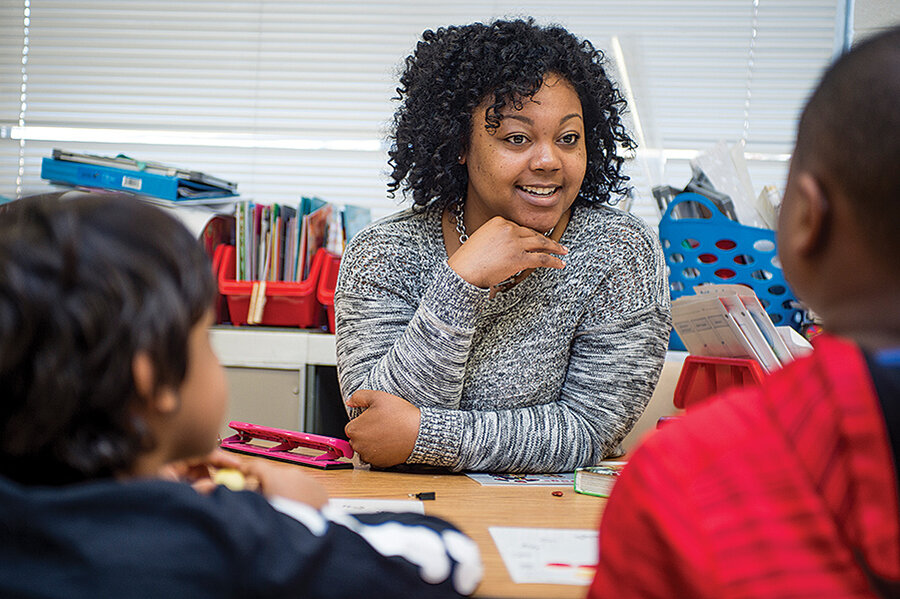Creating a virtuous cycle
Loading...
When is it right to intervene? Often it isn’t. Individuals, communities, and industries figure out what is best for themselves and pursue their own betterment to avoid dependency and own the success they achieve. But sometimes conditions are so dire – because of war, natural disasters, or long-standing economic decline, for instance – that intervention is the only way to jump-start progress.
In a Monitor cover story (click here), Simon Montlake details how for the past 11 years an anonymous group of philanthropists has helped the Rust Belt city of Kalamazoo, Mich., recover from a long slide by guaranteeing high school graduates an opportunity to pursue a college education. Kalamazoo didn’t need that kind of intervention during its industrial heyday. But the loss of manufacturing jobs due to economic circumstances far beyond local control led to a vicious cycle of plant closings, unemployment, dwindling tax base, and lagging schools. The Kalamazoo Promise appears to have helped reverse that cycle.
It is worth noting that the creative destruction that Kalamazoo has undergone is a normal, if painful, part of capitalism. If once-thriving enterprises were not eclipsed by new ones, we would still be driving Model Ts and listening to gramophones. But creative destruction is pitiless about the price of progress: the loss of jobs, the disruption of families and communities. In a diverse economy, disruption can be mitigated. Workers can be retrained and find new jobs across town. But when the gales of creative destruction blow incessantly, alternatives can dwindle and hope fade.
The United States and other capitalist economies have never been dogmatic about letting creative destruction run wild. For 2-1/2 centuries, governments have stepped in when needed. In recent years, President George W. Bush bailed out the financial-services industry, and President Obama bailed out the auto industry. Even before his inauguration, President-elect Donald Trump has pressed American companies to think twice about offshoring manufacturing jobs. Economic purists have criticized those efforts as “crony capitalism.” And they might only be a stopgap as technology, automation, and shifting consumer tastes continue to batter old industries.
The Kalamazoo Promise is not trying to hold the line against the gales of creative destruction. It is not shoring up teetering industries. It is seeding the future by giving the people of the future a leg up via college education. That has transformed a vicious cycle into a virtuous one. Many of the young people who have benefited have remained in Kalamazoo – their skills, smarts, and interests stirring an urban revival.
Let’s not call that crony capitalism. Let’s call it community capitalism.








